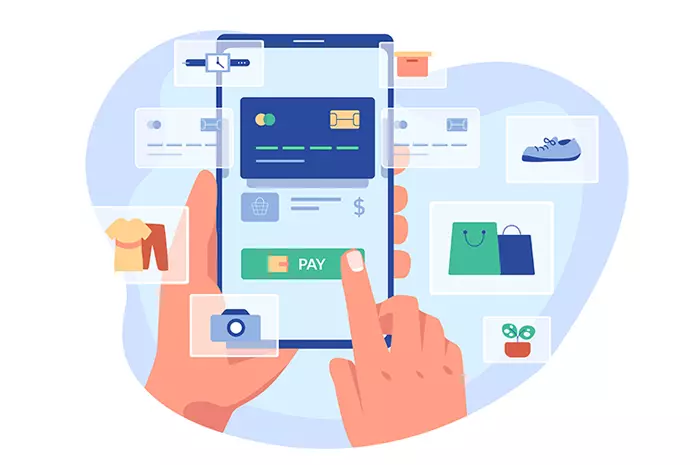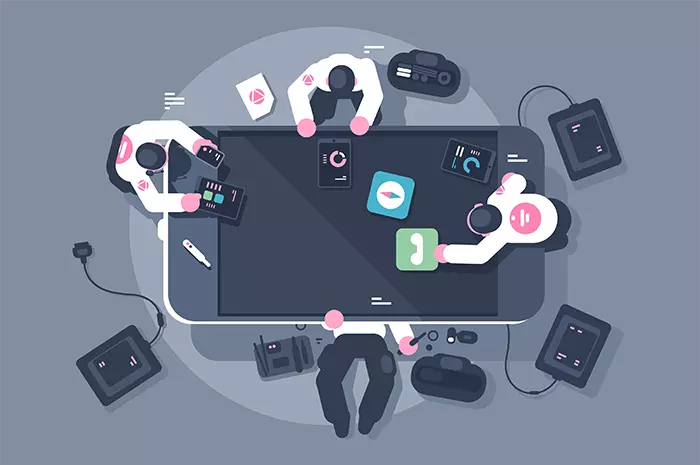From purchasing a pair of shoes from Etsy to upgrading to Spotify Premium to even buying an app from the Play Store, in-app purchases are happening all around us. At the start of this year, Statista estimated the total of global sales from customer spending with a mobile app to reach almost $37 billion.
Unsurprisingly, Statistica also projected that 2017 will be the year that in-app purchasing dominates as the leading source of mobile app earnings, accounting for 48.2% of revenue.
For app startups and experienced customer experts, this represents an enormous opportunity. But with opportunity comes competition and a need for mobile strategies that set you apart from the rest. In this article, we'll show you how to optimize the mobile app customer journey to drive value for your customers, investors, and brand for the long haul.
Create purchasing incentives.
Especially when it comes to their first purchase, most consumers need some extra encouragement or motivation to give your offerings a try. The most common method by far is offering a discount, but this strategy has a couple problems:
It's unsustainable - especially for trial offers that advertise subscription-based services for a lower initial amount set to increase by a certain date. This could easily devalue your products or result in abandonment after the first purchase
It's hard to please everyone. Unless you're dealing with a store-wide discount for a retail app, you're going to find it difficult to create a promotion that won't entice some but exclude others. This brings us to...
Know your customer buyer personas.
If you have no idea who wants to buy what, it's impossible to target customers effectively. The first way you should begin collecting user data is through tracking the in-app customer journey in the same way you would track click paths for your website. This way, you don't have to guess at what leads a customer to the decision to purchase – you'll have precise insight on what that model looks like. Even better, you'll be able to identify where users fall off these paths due to user interface errors and craft the ultimate user-centred design. These should be paid special attention to in-app prototyping, to ensure that you're capturing value from all potential customers.
Target individual customers.
Using the two previous steps, you can now create personalized campaigns to target consumers with relevant, beneficial incentives based on mobile user behavior and demographics. According to App Boy, this form of customization increases conversions like in-app purchases by 27%.
Encourage super-user culture.
It's impossible to convince every single user to make a purchase through your app. Instead of doing so, it's much more efficient to identify "super-users" – a smaller percentage of users who account for a large percentage of in-app purchases. This trend is most evident in mobile gaming apps, as EEDAR revealed that just 6% of these customers as responsible for 50% of revenue. Do you know any other case studies for the super-user phenomenon? Send us an email and let us know.
But not only is it useful to identify current super-users, an opportunity lies in finding and cultivating future super-users. Compare the behavior of the two user groups and create personalized incentives for the latter to mature into loyal customers.
Utilize email marketing techniques.
Although the ultimate goal for mobile app development to create a holistic customer experience, that doesn't mean that it exists in a vacuum. Aligning the in-app user experience (UX) with your other marketing efforts is essential for the online experience.
Email marketing is one of the best channels for promoting purchases within your app because users can enjoy a smooth transition from one medium to the other. Litmus found that 55% of emails are now opened on a mobile device, which means that deep links can be used to create effective customer experiences that begin in their inbox and end with an in-app purchase.
As a full-service IT provider, BluEnt offers custom application development as well as email marketing solutions. From optimizing the in-app UX for email strategies to creating full newsletter campaigns to accompany them, BluEnt has perfecting the art of creating apps that make the most of your marketing strategies with the latest technology on the market.
Follow up on lost customers.
App Boy estimates that over 67% of potential online purchases are abandoned and left unfinished. However, these customers shouldn't be ignored – they represent a group of people who were interested enough to consider buying your products or services and may simply need the final push to do so.
Take the time to analyze where they left the transaction and what decisions they made up until that point. For example, what did they put in their checkout cart? What was on their screen when they abandoned the purchase?
These could lead to one of two things:
The creation of personalized promotions through push notifications, email alerts, etc. that provide them with the purchasing incentive they need.
UI improvements that, especially in the app wireframing stage, will help you avoid bugs that disrupt users on the path to purchase.
Make mobile users out of web visitors.
When you take up our previous tip, keep in mind that some users abandon checkout because they prefer to research a product on their smartphones and finish the transaction on the web where possible. If you're creating an app to expand your online presence rather than establish it, take advantage of the audience you already have.
While there's nothing wrong with a customer experience starting in-app and ending on the web or in-store, you run the risk of the mobile user getting distracted or changing their mind. Instead, use web traffic as a resource for marketing your app and directing users to it, rather than the other way around. As we grow into a more and more mobile-centric world, this will help you avoid friction in the long run.
With these seven tips in mind, you'll be well on your way to building a mobile app that users will be more than willing to makes in-app purchases through – and our team at BluEnt wants to help. We're passionate about working with innovative enterprises and funded startups to bring their apps to life. For each of our clients, we develop the perfect application suited to their needs, budget, and timeframe based on the latest technology in mobile app development.
To learn more about what you could create with BluEnt, send us a message today.
Maximum Value. Achieved.



 How Much Does App Development Cost? A Budget Estimation Guide
How Much Does App Development Cost? A Budget Estimation Guide  Using Angular to Develop Mobile Apps Can Be a Game Changer for Your Business
Using Angular to Develop Mobile Apps Can Be a Game Changer for Your Business  Pros and Cons of the WooCommerce Plugin for Online Merchants
Pros and Cons of the WooCommerce Plugin for Online Merchants  Mean Stack vs LAMP Stack: Which One is Better for Your Business?
Mean Stack vs LAMP Stack: Which One is Better for Your Business? 